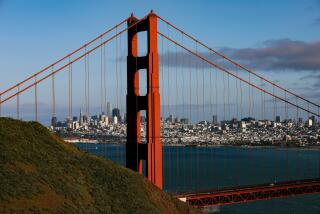S.F. police scandal focuses attention on dwindling number of blacks
When black friends come to visit, they inevitably ask Timothy Alan Simon the same question: Why are there so few African Americans?
A San Francisco native, Simon attended St. Ignatius College Preparatory, the University of San Francisco and Hastings College of the Law. At one time, he saw other black faces in all of the city’s neighborhoods. It seems every year there are fewer, he said. Even his own children prefer Oakland, which has a thriving and economically diverse black community.
“We’re down to bone marrow in San Francisco,” said Simon, 59, a lawyer and law professor.
In the wake of a police scandal involving racist text messages, some black leaders are again lamenting the shrinking size of the city’s black community. They have questioned whether a mass exodus of African Americans in recent decades has been driven as much by subtle forms of racism as by the city’s high cost of housing.
In 1970, blacks made up 13.4% of the city’s population. Today they account for less than 6%. City leaders have commissioned studies and task forces to reverse the trend, but to little avail.
Among the biggest 14 cities in the nation, San Francisco is near the bottom in the share of black residents. African Americans make up 25% of the population in New York City, 9.4% in Los Angeles, and 27% in Indianapolis. The only city in the group with a smaller percentage is San Jose, with 3%.
“Vigilante groups aren’t chasing blacks out, but there are factors that are making other places more desirable,” Simon said.
Civil rights leaders here attribute the exodus not just to the high cost of living, but to policies that have favored independent retailers over chains, urban renewal that tore down the housing where many African Americans lived, redlining by banks and high crime concentrated in neighborhoods where blacks lived.
“When I got here, there were nearly 100,000 African Americans, and now there are maybe 40,000,” said the Rev. Arnold Townsend, a board member of the local NAACP. “What we have now wouldn’t even fill up the stadium where the Giants play.”
Revelations of racist and homophobic texts by 14 police officers — which came to light in court papers — stirred shock and outrage in this traditionally liberal city. But many black residents said they were not surprised.
The city likes to congratulate itself for its open views and tolerance, but “before 1965, you couldn’t get a job teaching in San Francisco,” said the Rev. Amos Brown, another NAACP board member. “You had to go to Oakland or Berkeley.”
“We’ve had such a hemorrhaging of black folks,” Brown said. “The black churches are almost empty.”
He pointed to the Fillmore District west of downtown, once regarded as the Harlem of the West. African Americans who migrated from the South during World War II flocked to the jazz clubs and watering holes.
“All the black businesses in Fillmore are almost gone now,” Brown said. “The Chicago Barbershop — a 70-year-old institution? Gone. Marcus Books, the oldest depository of books by black authors? Gone.”
To be sure, there was a migration of African Americans to the suburbs in other big cities as well. San Francisco has had a black mayor — Willie Brown — and two members of the Board of Supervisors are African American. About 9% of the city’s police force is African American.
But many of the African Americans who live here are significantly poorer than other residents and much more likely to be arrested and incarcerated, studies show.
A 2012 report by the Center on Juvenile and Criminal Justice examined a 40-year pattern of arrests and found that African Americans were arrested for felony drug crimes 19 times more often than other races and 7.3 times more often than blacks elsewhere in California. More than half of all youth drug felonies involved African Americans, the report said.
London Breed, who heads San Francisco’s Board of Supervisors, said many black families moved from the Western Addition 20 years ago after the city decided to tear down housing projects and build new ones. The new housing is now filled with Russians and Asians, she said.
Crime also exploded, and black families migrated to the suburbs to keep their children safe, she said.
“When you concentrate people in poverty together without hope, there is a lot of tension,” said Breed, 40, an African American who grew up in a housing project in the Western Addition.
These days, black residents in her district are clamoring for a bigger police presence, and community policing has succeeded, she said.
But the absence of more black faces troubles her.
“I am just trying to hold on to evidence that blacks ever existed in San Francisco,” Breed said.
Twitter: @mauradolan
More to Read
Start your day right
Sign up for Essential California for news, features and recommendations from the L.A. Times and beyond in your inbox six days a week.
You may occasionally receive promotional content from the Los Angeles Times.







